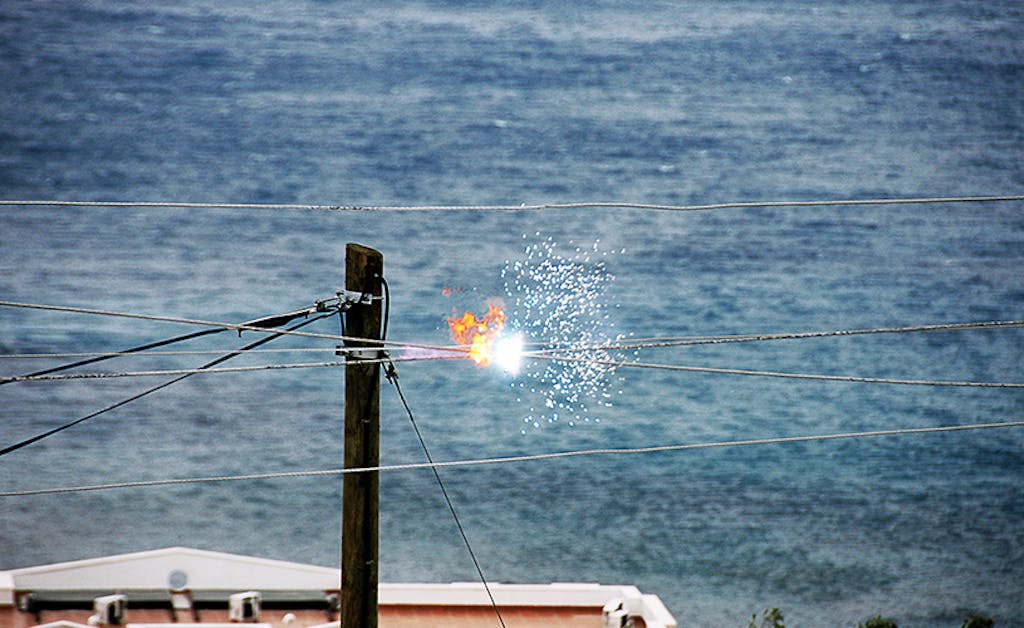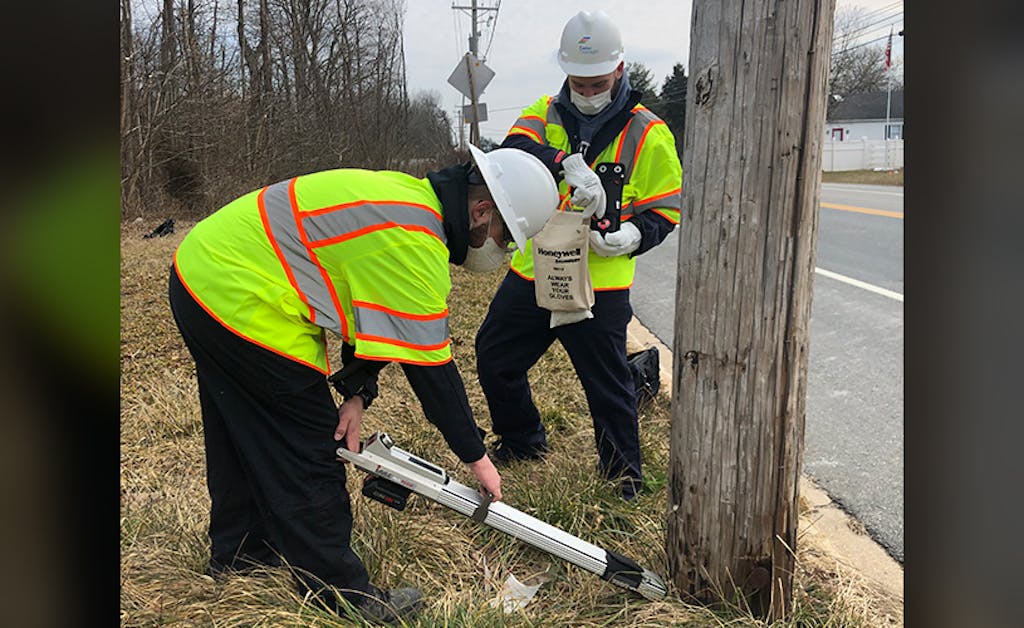7-minute read
In this article:
- Explore the history of wood poles in electric distribution.
- Learn the role of inspections in ensuring their health and integrity.
- Learn practical tips for electric cooperatives on how to implement an effective inspection program
This article is the first installment of our new back to basics series. Throughout this series, Clearsight leadership will discuss foundational topics in the world of electric infrastructure. Read our most recent additions where we focus on emerging technology in electric inspections and data management.
As an electric cooperative, ensuring the safety and reliability of your electrical distribution system is essential. One critical aspect of this is maintaining the health and integrity of your wood poles, which form the backbone of your power delivery infrastructure.
The History of Wood Poles in Electric Distribution
The use of wood poles for electric distribution in the United States dates to the late 1800s. In the beginning of the electric power industry, wood poles were a popular choice due to their availability, durability, and – compared to iron or steel – their low cost. As the industry grew and more people began to have access to electric power, the use of wood poles became more widespread.

As wood poles became more widely used, the National Electric Light Association (NELA), which later became the Edison Electric Institute (EEI), recognized the need for industry-wide standards to ensure the safe and efficient use of wood poles in power distribution. In the early 1900s, the EEI established standards for the size and spacing of poles, the type of wood used, and methods for treating and preserving the poles to extend their lifespan.
Related: Constellation Clearsight’s Methodology: Digital Utility Line Inspection Services
These standards helped to ensure the reliability and longevity of wood poles in power distribution and contributed to their continued popularity, particularly in rural areas where the cost of maintaining power lines was higher due to the need to cover longer distances.
Get In Touch
Reach out to our inspection team to learn more about how we can help maintain your critical infrastructure…
Today, wood poles continue to be used across the United States and are viewed as a reliable, cost-effective material for electric power distribution.
The Role of Inspections
From the brief history, it’s clear that wood poles were popular in the build-out of the American electrical grid.
Compared to other materials, however, they are also subject to deterioration and damage from weather, insects, and decay. Even with modern treatments and preserving methods, wood poles are vulnerable to damage from their surrounding environments. This damage can compromise the structural integrity of the poles, leading to outages and safety hazards.
Safe Electricity Reliability
This is why ongoing, comprehensive wood pole inspections are essential. By identifying signs of decay, insect infestation, and other forms of damage early on, electric cooperatives can take proactive steps to prevent outages and ensure the safety of their employees, members, and communities.

To maintain a high level of safe electricity reliability, the National Electric Safety Code (NESC) requires periodic inspections of wood poles. NESC’s standards recommend a minimum inspection frequency of once every ten years, but depending on environmental factors, more frequent inspections may be required.
Assessing Conditions & Extending Lifespan
During inspections, electric cooperatives should carefully assess the overall condition of the poles, including their foundations, hardware, and other components. From our experience, wood pole inspections should also involve aerial visual assessments, pole-top inspections, and pole integrity (sound-and-bore, or our Non-Destructive Inspection method) testing to determine the internal condition of the pole.
In addition to identifying damage and decay, inspections can also help electric cooperatives identify poles that may be overloaded or in need of reinforcement. By taking proactive steps to address these issues, cooperatives can extend the life of their poles and avoid costly outages.
Our Wood Pole Inspection Treatment & Reinforcement Solutions
While wood pole inspections can be labor-intensive, the benefits of regular inspections far outweigh the costs. By ensuring the safety and reliability of their electrical distribution systems, electric cooperatives can provide their customers with uninterrupted service and peace of mind. Our experts are available to discuss how you can build or improve your sustainable inspection program – as well as how we can reduce both labor and overall costs.
Constellation Clearsight wood pole inspections identify signs of damage and decay early on, empowering electric cooperatives to make accurate and proactive maintenance decisions. Regular inspections should be a key part of any electric cooperative’s maintenance program, helping to ensure the long-term health and integrity of their power delivery infrastructure.

Why Constellation Clearsight?
At Constellation Clearsight, we understand the importance of safe and reliable electrical distribution systems. Our wood pole inspection treatment and reinforcement solutions can help you maintain the health and integrity of your power delivery infrastructure while reducing labor and overall costs. Contact our experts today to learn more about how we can help you build or improve your sustainable inspection program. Stay tuned for our next installment of the “Back to Basics” series, where we will continue to discuss foundational topics in the world of electric infrastructure.
Related: Here’s How Our Methods Can Help Solve Vegetation Management Problems
Related Content

A Guide to Non-Destructive Inspection (NDI) of Electric Network Wood Utility Poles
Learn the benefits of nondestructive wood pole inspections. See how efficient NDI tech can reduce excavations and provide actionable reports for maintenance.

Revolutionizing Confined Space Inspections: Exploring Innovation with Chris Place is Now Live!
Discover innovative confined space inspection strategies with Chris Place. Enhance safety, efficiency, and accuracy in your facilities. Now live, watch here!

